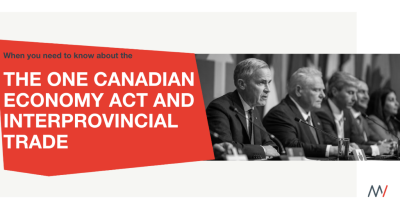The Short Report July 2, 2025
Three-quarters of Canadians support “fast-tracking” major projects but not at the expense of bypassing environmental reviews; extreme rise in policy uncertainty is taking a toll on business and consumer confidence; Ottawa lacks whole-of-government insight and tools to determine “best value” in procurement; Western Canada is well positioned to become a powerhouse in critical minerals-battery production value chain; and more.
Other stories mentioning these organizations, people and topics
Other News
Events For Leaders in
Science, Tech, Innovation, and Policy
Discuss and learn from those in the know at our virtual and in-person events.
See Upcoming Events
You have 0 free articles remaining.
Don't miss out - start your free trial today.
Start your FREE trial Already a member? Log in
By using this website, you agree to our use of cookies. We use cookies to provide you with a great experience and to help our website run effectively in accordance with our Privacy Policy and Terms of Service.




